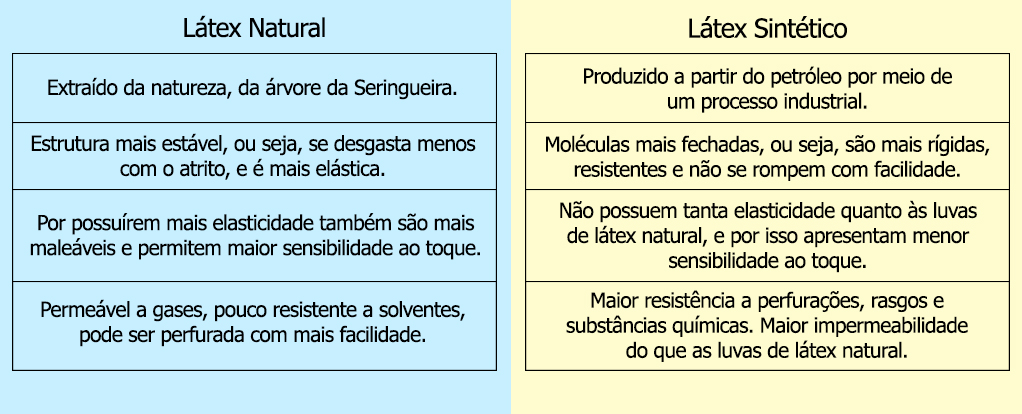Latex (or rubber) is a liquid and whitish natural substance extracted from rubber trees, which in our country is a tree native to the Amazon. From it it is possible to produce the most diverse materials, such as condoms, tires, birthday balloons, bottle nipples, toys and even mattresses, shoes and fabrics.
But in addition to natural latex, it is also possible to find synthetic versions, produced from an oil industrialization process. There are several types of synthetic latex, such as nitrile and neoprene, which are common substitutes for natural latex, especially for people who have allergies to the natural substance.
Both versions of latex are used in the manufacture of procedure gloves, used in hospitals, clinics, petshops, food industry, chemical laboratories, aesthetic clinics, among others.
However, many professionals who make the use of procedure gloves in their daily lives are unaware of the differences between the two materials, and have doubts when choosing the best material for each activity.
Check out the table below to understand the differences between the two types of latex gloves:

In addition to the points mentioned above, natural latex gloves are better added to the hands, and are still biodegradable and produced from organic and sustainable processes, that is, they cause a smaller impact on the environment.
On the other hand, the strength of synthetic gloves makes them offer more protection against perforations. Surgical gloves, for example, can use a percentage of natural latex (ensuring malleability and sensitivity to touch) and a percentage of synthetic rubber (enhancing protection and preventing the risk of breakage) in its composition.
Now that you’ve seen the difference between synthetic and natural rubber, it’s easy to choose the ideal glove for your activity. Always prioritize the use of certified products and ensure more security for your establishment and your employees. Click and get to know Kevenoll products.

